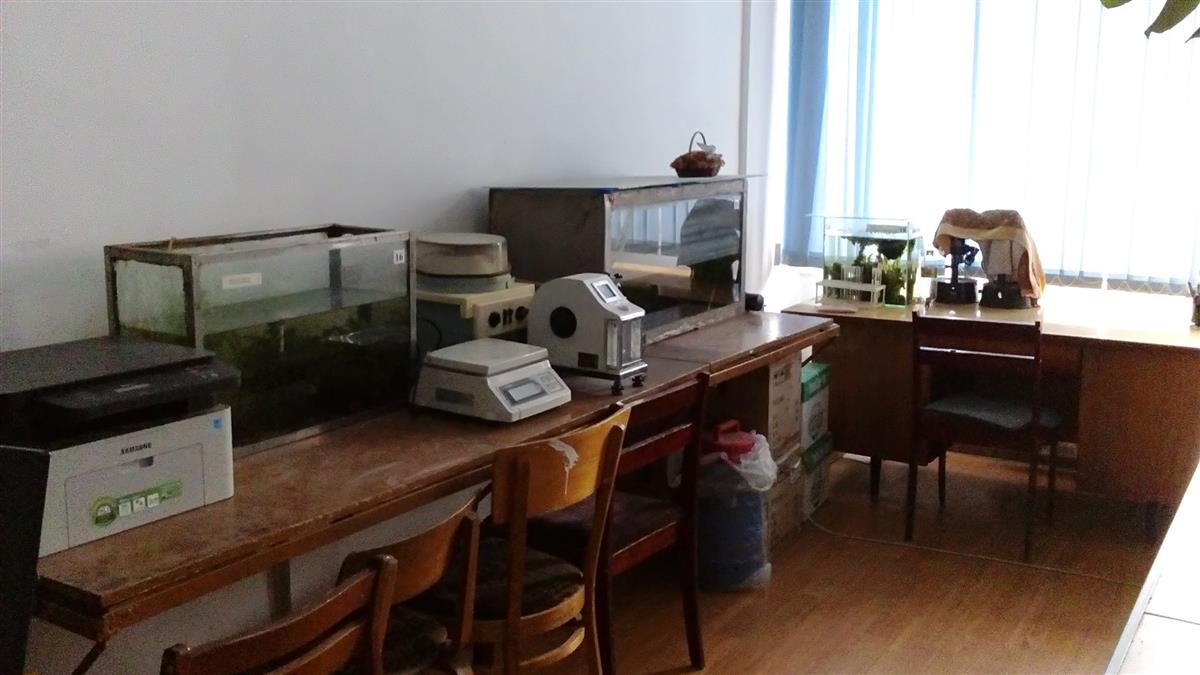LABORATORY OF ZOOLOGY
Views: 2784

LABORATORY OF ZOOLOGY
Research Institute of Biology and Biotechnology,
Department of Biodiversity and Bioresources
Faculty of Biology and Biotechnology KazNU named after Al-Farabi
Head:
Candidate of Biological Sciences (PhD), Associate Professor of the Department of Biodiversity and Bioresources, Leading Researcher Mamilov N.Sh.
Staff:
Nikolaev G.V., Doctor of Biological Sciences, Professor, Chief Researcher - Entomology
Eszhanov B.E., Ph.D., Associate Professor, Leading Researcher - Theriology
Sapargalieva N.S., Ph.D., Senior Researcher - Ichthyology
Sharakhmetov S.E., doctoral candidate, researcher - ichthyology
Amirbekova F.T., doctoral candidate, junior researcher - ichthyology
Khasengazieva G.K., undergraduate - hydrobiology
Makambetov S., undergraduate - ichthyology
The main areas of research:
1. Systematics and evolution of animals
2. Preservation of the natural diversity of animals
3. Adaptations of animals under conditions of increasing anthropogenic load
STUDY OF THE DIVERSITY OF COMMUNITIES AND THE STATUS OF FISH POPULATIONS UNDER THE CONDITIONS OF THE FLUENTING ENVIRONMENT:
Methods: standard methods for chemical analysis of water, standard methods for morphological analysis of fish, methods for morphological analysis, histological analysis, biometric analysis.
Results: The hydrological regime of water bodies is one of the main factors of fluctuations in the fish habitat; anthropogenic pollution by industrial, agricultural or household wastes acts as additional sources for specific water bodies.
The existence of indigenous species, the spotted gubach and the Turkestan sculpin, has been proved in the Syrdarya basin. In the spatio-temporal aspect, the Aral Shemai experienced a change in most morphological indicators. The appearance in the Aral roach population of individuals with new sets of countable characters indicates the effect of disruptive selection in the Syrdarya River.
In the river basins of the Syr Darya, Shu and Balkash basin, the structure of the populations of commercial fish — carp, roach, and snakehead — consists of individuals of different ages, which indicates favorable conditions for their reproduction.
On the example of the Balkhash marinka from the Karatal river, it is shown that in the rivers of the Balkash basin indigenous species can experience significant negative anthropogenic impact, which leads to their rapid elimination from the composition of the ichthyofauna. The great morphobiological plasticity of naked osman and spotted gubach has been established, which allows these species to adapt to fluctuating environmental conditions and remain the dominant species of ichthyofauna in many rivers of the Balkash basin.
The communities of fish in the water bodies of Central Kazakhstan are highly stable: they have a complex of fish species adapted to significant environmental fluctuations and normally reproducing in the absence of significant anthropogenic impact. The successful introduction of a non-commercial species of fish, new for Kazakhstan, has been confirmed: the tops into the water bodies of Central Kazakhstan, which may indicate significant disturbances in the ecosystems of the water bodies of the invasion.
Non-commercial native fish species (char, sculpin, marinka) perform important ecosystem services - they control the number of blood-sucking insects and maintain the stability of the biogenic cycle in aquatic ecosystems.
STUDY OF SPATIAL AND TEMPORARY CHANGES IN COMMUNITIES AND POPULATIONS OF FISHES OF INLAND RESERVOIRS OF KAZAKHSTAN
A study of the morphological variability of sabrefish and roach, which are currently the dominant species in the fish community, revealed a great plasticity of the populations of these species, allowing it to easily adapt to changing environmental conditions.
The reduction in the age range in the roach population in the Syr Darya river can be associated both with fishing and with an unfavorable state of the environment. Histological analysis revealed pathologies in all pike detoxification systems from the middle section of the Syrdarya River.
In the variety of fish r. Aksu and r. Leps is dominated by alien species, indicating a radical restructuring of the ichthyofauna of these rivers. Based on the morphological analysis of mustard from the river. Ile belongs to the species R. ocellatus.
The first results obtained allow us to consider the Semirechye minnow, the Balkhash marinka, Turkestan gudgeon and Aral pinch as promising objects for decorative fish farming.
The study is in line with the current direction of scientific work aimed at solving the problem of the origin and dynamics of biological diversity under conditions of anthropogenesis. The information obtained can be used to prevent damage from loss of ecosystem services, biological invasions and save money on the conservation of natural biological diversity in situ.


Main publications:
- Р








